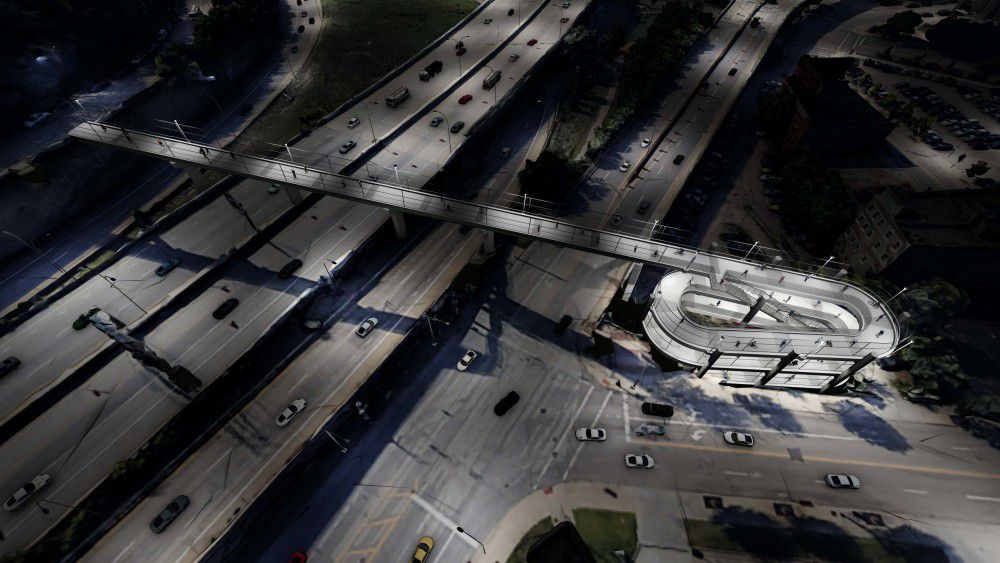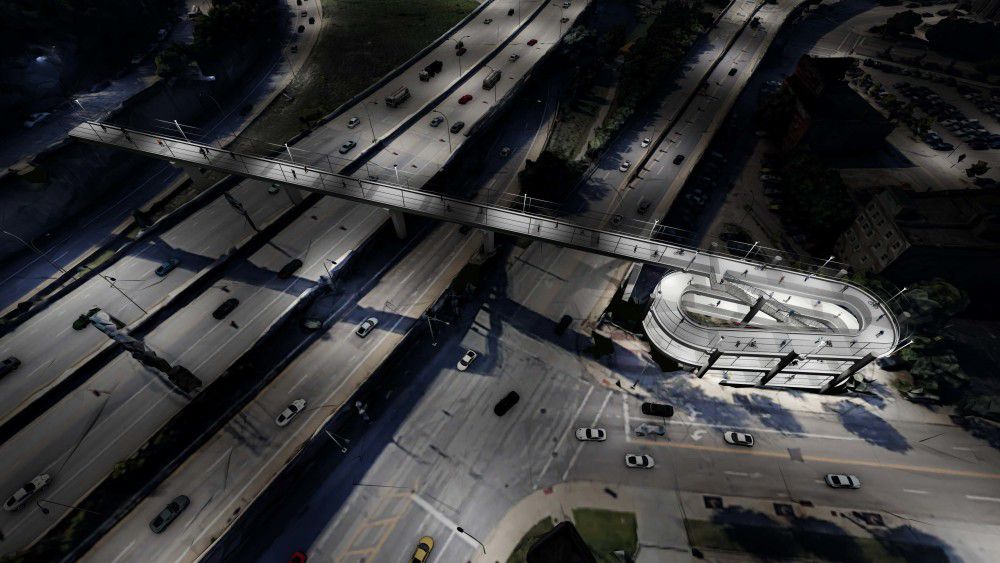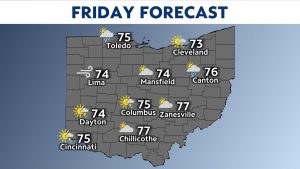CINCINNATI — A new website aims to collect public feedback and provide updates on a project to replace an aging pedestrian bridge system that connects downtown Cincinnati to Mount Adams.
What You Need To Know
- Residents can provide feedback on a proposed new pedestrian bridge between downtown Cincinnati and Mount Adams
- The project would replace the existing two bridges that go between East Court Street and Van Meter Street
- The website offers details, charts and renderings of the two primary proposals
- Construction will begin and wrap up in 2026
The Ohio Department of Transportation (ODOT) is in the beginning stages of a plan to replace the two bridges traveling over Interstate 71, the Interstate 471 access ramps and Gilbert Avenue/U.S. Route 22.
The system goes between East Court Street in the Central Business District and Van Meter Street in Mount Adams, a hilltop neighborhood just under two miles from downtown.
The project won’t begin until 2026, but ODOT wants to use the next two months to gather public opinion to help with the development process.

An artistic rendering of a design proposal known as “Alternative 1,” which would be built near the site of the current bridge. (Photo courtesy of Ohio Department of Transportation)
On June 1, the transportation agency launched what it called a “virtual Public Open House” to share information about the project and gather public feedback about the proposals under consideration.
“Community engagement and public participation are important to every project we undertake,” said Kathleen Fuller, a spokesperson for ODOT District 8, which represents southwest Ohio. “The public involvement process enables transportation officials to make informed decisions based on multiple viewpoints and other factors while ensuring the needs and preferences of a community are also considered.”
ODOT described the website as a “self-guided tour” through the background of the pedestrian walkways and the two primary options to replace them. The website features a series of tabs highlighting specific elements of the project, including a side-by-side comparison of the proposals. There are a series of maps and artistic renderings showcasing what the bridges would look like as well.
Questions asked by ODOT focus on personal use of the current bridge — how often a person uses it and why they use it, and whether they walk across it or ride a bike. Users can also weigh in on the preferred look of the bridge.
Each tab on the website has a comment section where people can share their thoughts and offer feedback. Comments are visible to the public unless the user makes them private.
ODOT will accept comments until July 15. At that time, staff will review the input received and use it to select one of the proposals, or “alternatives.”
Project background and timeline
Built in the 1960s, the Mount Adams pedestrian bridge system is getting old. ODOT’s primary concerns include the deterioration of the concrete on both bridges and the staircases. The underlying bridge support structures have weakened because the joints have let water through over the years.
There are other concerns, such as the fact the vertical clearance of the pedestrian bridge over I-71 is too low and the bridge piers don’t meet current impact resistance standards, per ODOT.
Neither of the bridges meets Americans with Disabilities Act (ADA) requirements.
ODOT developed two replacement alternatives, both of which include removing the existing bridges and building a single bridge and adding an access ramp. They’d each also take an extra minute or so to walk across compared to their predecessor.
Side view of “Alternative 2,” looking north (downtown is on the left side of the image; Mt. Adams is on the right). The pedestrian bridge would cross over I-471 north and south. (Photo courtesy of Ohio Department of Transportation)
Alternative 1 calls for the construction of a new bridge just south of the current location. It would still connect East Court Street and Van Meter. Alternative 2 calls for the construction of a bridge about 300 feet south of the current site to connect Van Meter to Eggleston Avenue. The goal would be to make use of the existing Eggleston mixed-use path near the dog park.
Both proposals would cost more than $4 million.
By law, ODOT had to include a “no build” alternative. That plan calls for ODOT to remove the existing bridge because of its deteriorating condition, but they wouldn’t build anything to replace it. Instead, ODOT would make improvements to the pedestrian path from Monastery Street in Mount Adams to Sixth Street downtown. One change would be to make it ADA-accessible.
ODOT is still in the initial planning stages. Besides gathering public input, the agency is also working on a feasibility study. That should wrap up in August.
Plans call for the development of detailed designs between October 2022 and March 2025. Construction will begin around April 2026 and wrap up in October of that same year.
The existing bridge system will remain open and in use as long as possible once construction begins. If they choose Alternative 2, it can remain open until ODOT completes the replacement bridge.
More information is available on the I-71 Pedestrian Bridge Replacement Project website.




